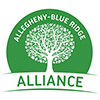In August ABRA launched its new Conservation Hub, a program designed to enhance the capabilities of environmental, conservation and citizen groups to better assess the impacts of projects in the greater Allegheny-Blue Ridge region and to help assure that the overall environmental integrity of the region is maintained. The program will employ some of the same technological tools that formed the basis of the ABRA Compliance Surveillance Initiative (CSI) program that was developed to monitor construction activities of the Atlantic Coast Pipeline (ACP).
Among the expected outcomes of the Conservation Hub program include:
- Empowering stakeholders to make more informed decisions about proposed projects that impact the environment of their communities and the region.
- Improving the quality and comprehensiveness of information presented to government regulatory bodies in helping their evaluation of proposed projects and, if such projects are approved, providing ongoing monitoring information to those agencies to assist their regulatory role.
- Encouraging regulatory agencies, when evaluating whether to permit a project, to consider the cumulative impacts that the project would have on the affected region. It has been our experience from fighting the ACP project that state and federal permitting agencies are ill-equipped to evaluate the cumulative environmental impacts that projects can have.
Among the initial projects that have been undertaken as part of the Conservation Hub program, in which analytical assistance is being provided to ABRA member organizations and others, are:
- Gold mine in Buckingham County, VA – An open-pit gold mine is under consideration in Buckingham County, VA, proximate to the Union Hill community that the now-cancelled Atlantic Coast Pipeline threatened (discussed in the October 8 ABRA Update).
- Corridor H – A highway project in northern West Virginia that could threaten the ecological character of the mountains it would traverse.
- Shenandoah Mountain Proposed National Scenic Area – A proposal that will require action by Congress. It has been endorsed by the National Forest Service.
- Greenbriar Southeast – A timber harvesting project in a portion of the Monongahela National Forest located in Pocahontas County, WV.
- Rocky Forge Wind Farm – A proposed ridge-top wind farm in Botetourt County, VA.
- Gauley Healthy Forest Restoration Project – The stated purpose of this proposed project within the Monongahela National Forest is to “the project is to improve forest stands by developing healthy stands that are more resistant to insects, disease, and fire.”
- Candy Darter – An assessment of the impact of several ongoing projects in West Virginia that would harm the habit of this recently declared endangered species.
- Shenandoah Rail Trail Partnership – Public, private, and non-profit groups in Rockingham and Shenandoah Counties, Virginia are considering converting an unused railroad into pedestrian and bike trail.
More details on these Conservation Hub projects are available on the Hub website, here.
The Conservation Hub program, with the assistance of the program’s advisory committee, is in the early stages of developing a map-based monitoring program to track proposed and ongoing projects in the three National Forests that are located within the Allegheny-Blue Ridge region (Monongahela in West Virginia and George Washington and Jefferson in Virginia). At any given time, there are several dozen ongoing projects underway or under consideration within the three National Forests. The Conservation Hub National Forest Mapping Project will provide valuable assistance to conservation groups throughout Virginia and West Virginia in keeping them apprised of these projects and their impact on the region.
For more information about the Hub program or to explore how a new project might be undertaken, contact Dan Shaffer, Ben Cunningham or Lew Freeman.

